Abstract
The field of behavioral economics combines concepts from economics and operant conditioning to examine the influence of schedules or price on preference for reinforcers. Three case studies are reported in which behavioral economic analyses were used to assess relative preference for reinforcers shown by people with intellectual disabilities when schedule requirements varied. The studies examined (a) preference for different reinforcers, (b) substitutability of reinforcers, and (c) changes in preference as a function of schedule requirements.
Keywords: preference, behavioral economics, substitutability of reinforcers, durability of reinforcers, potency of reinforcers
Full text
PDF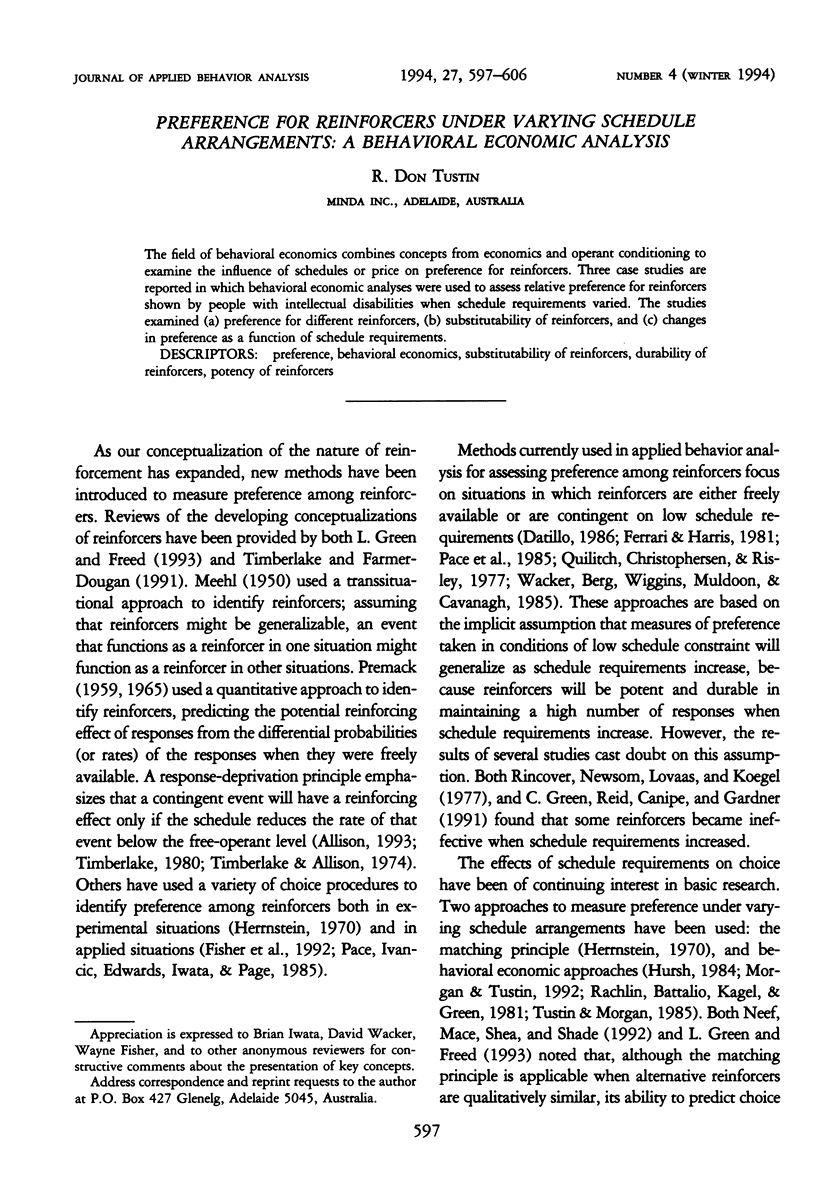


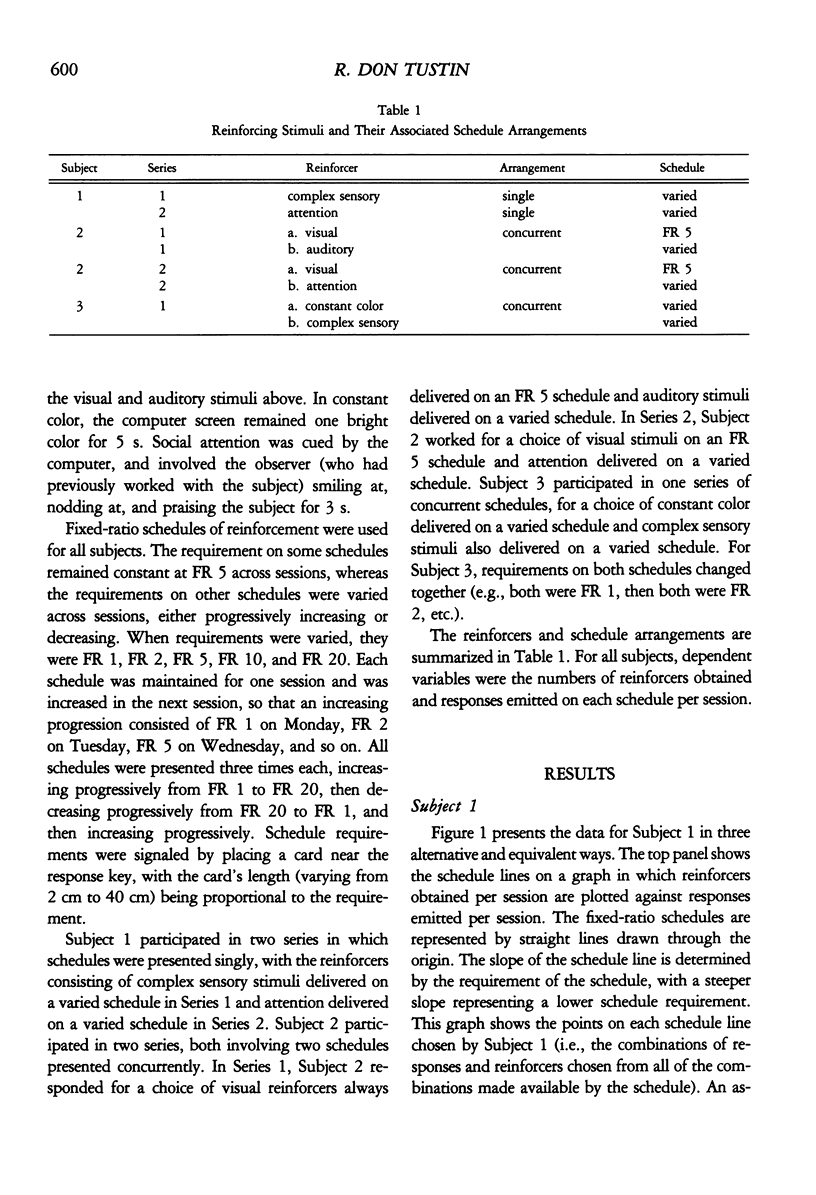
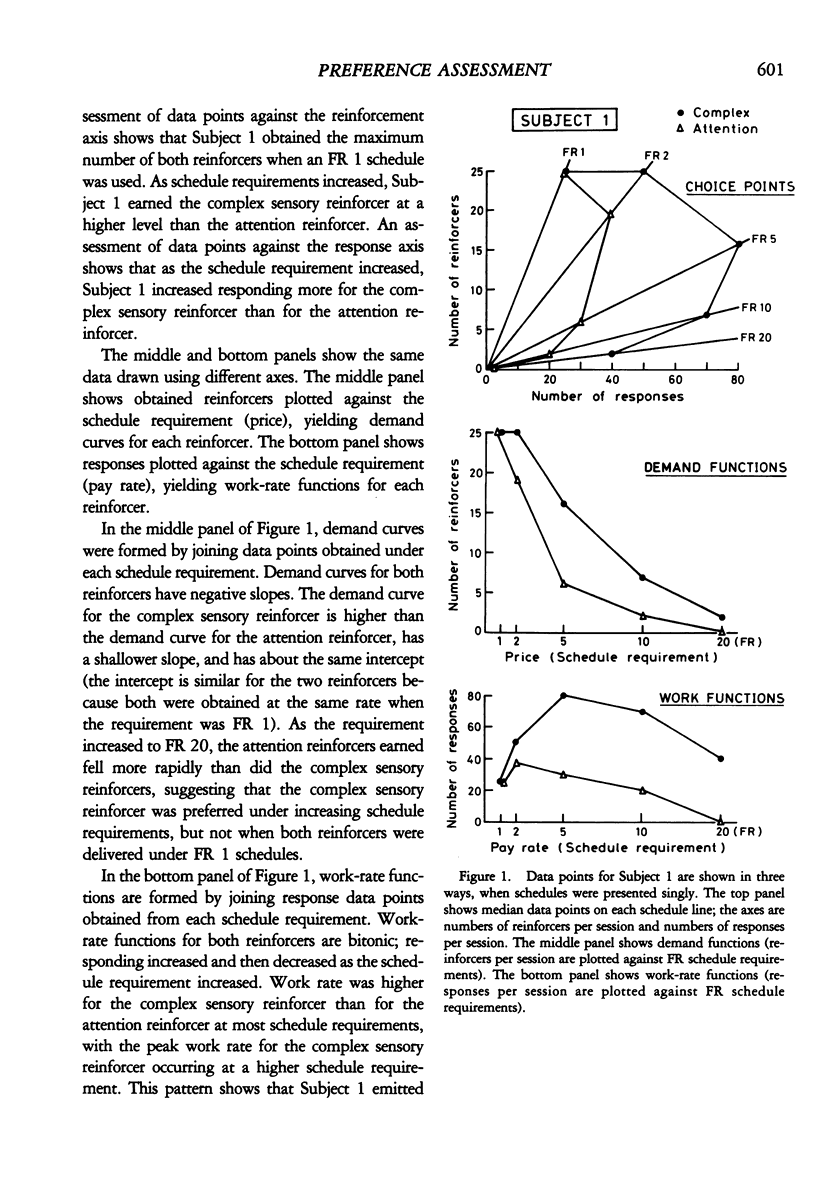
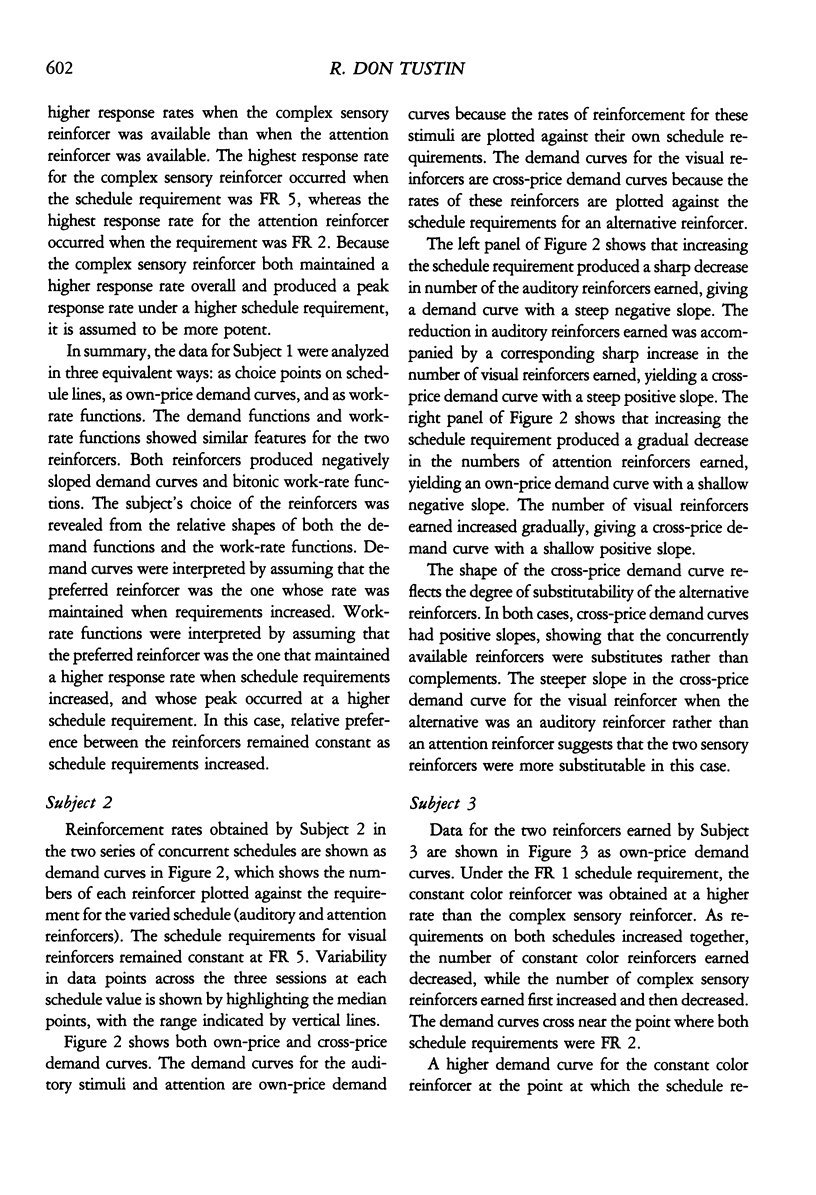
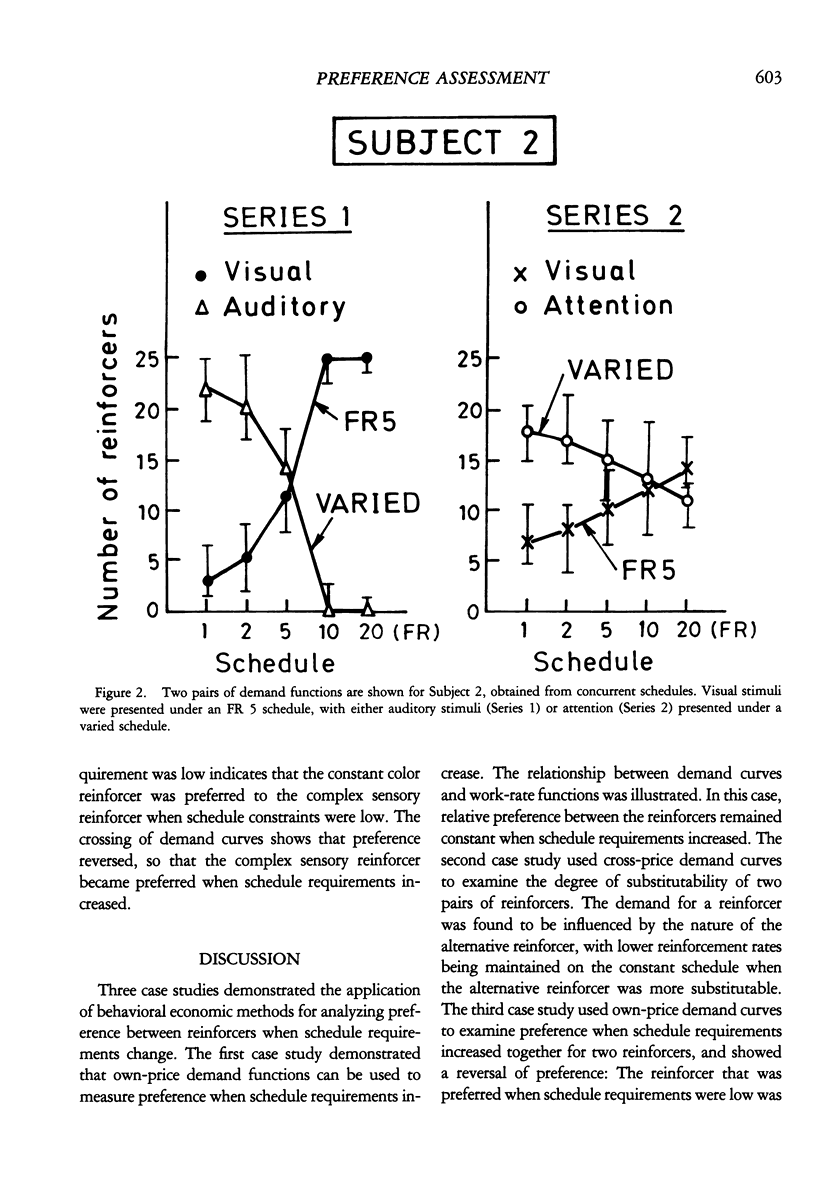
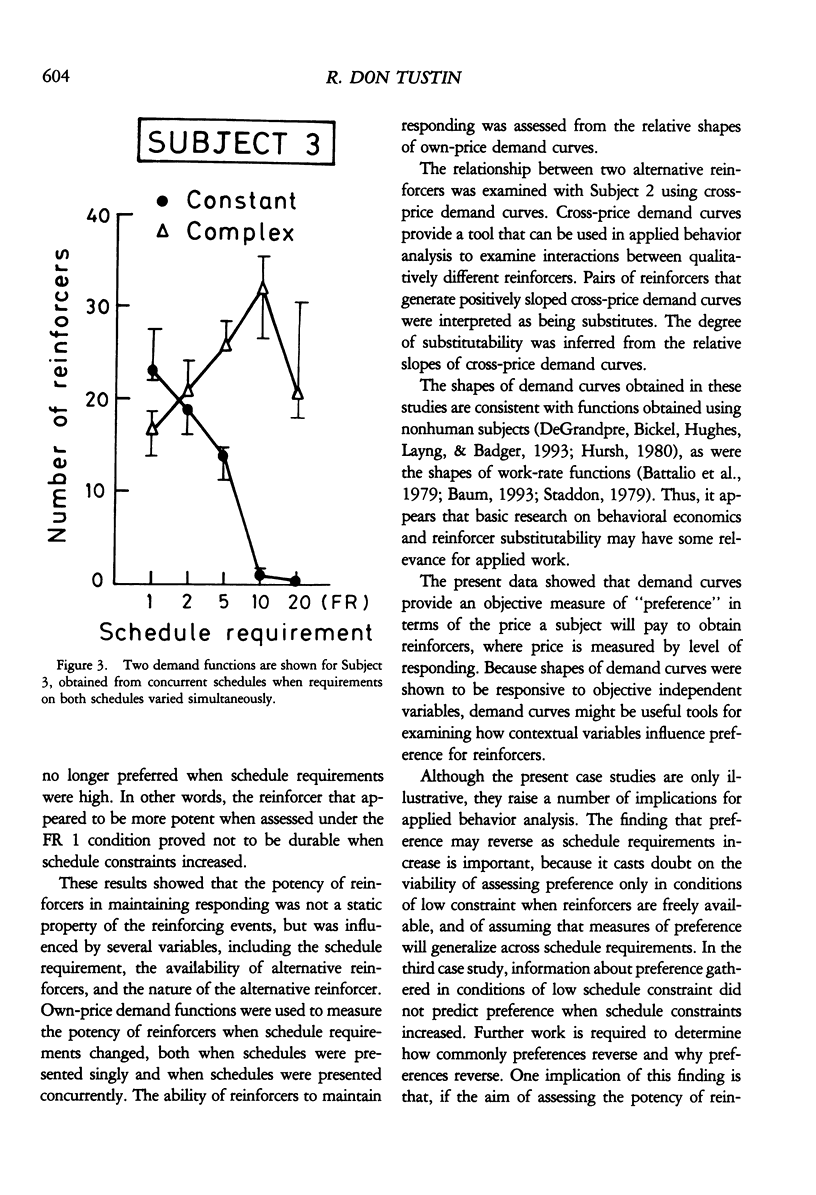
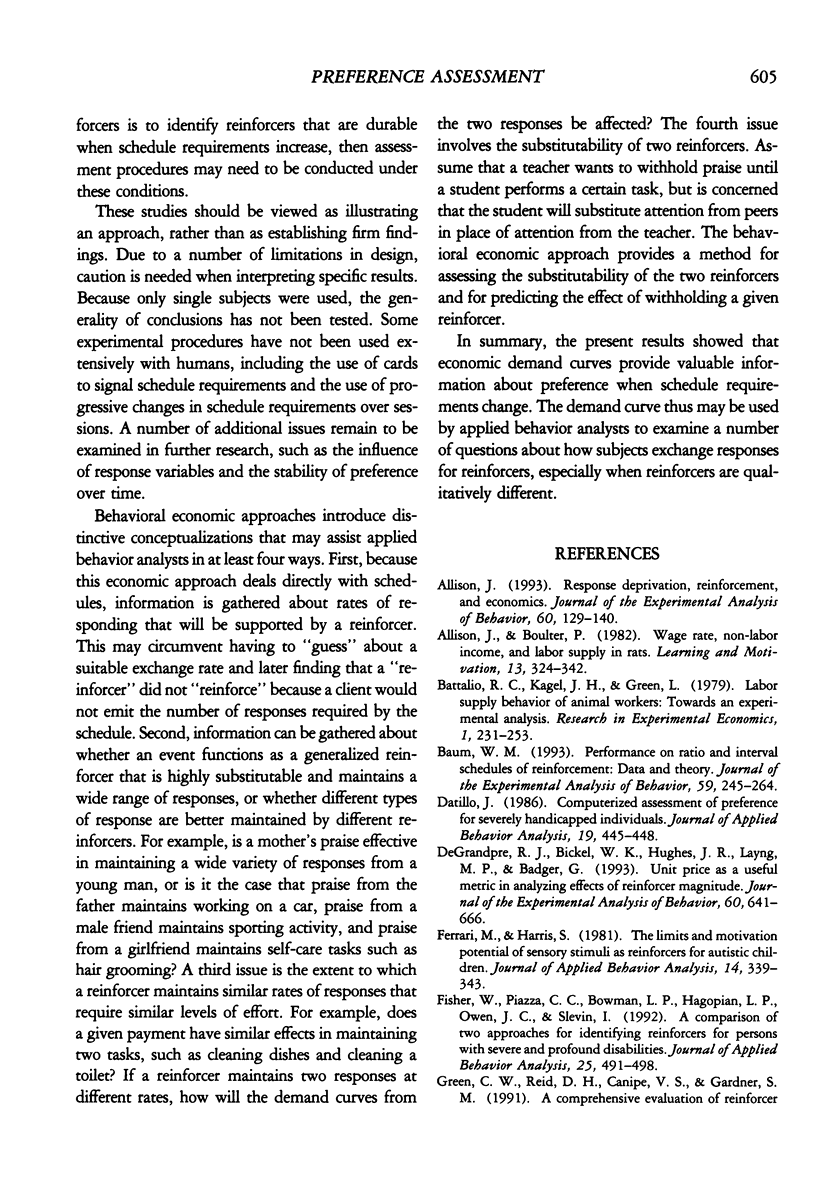
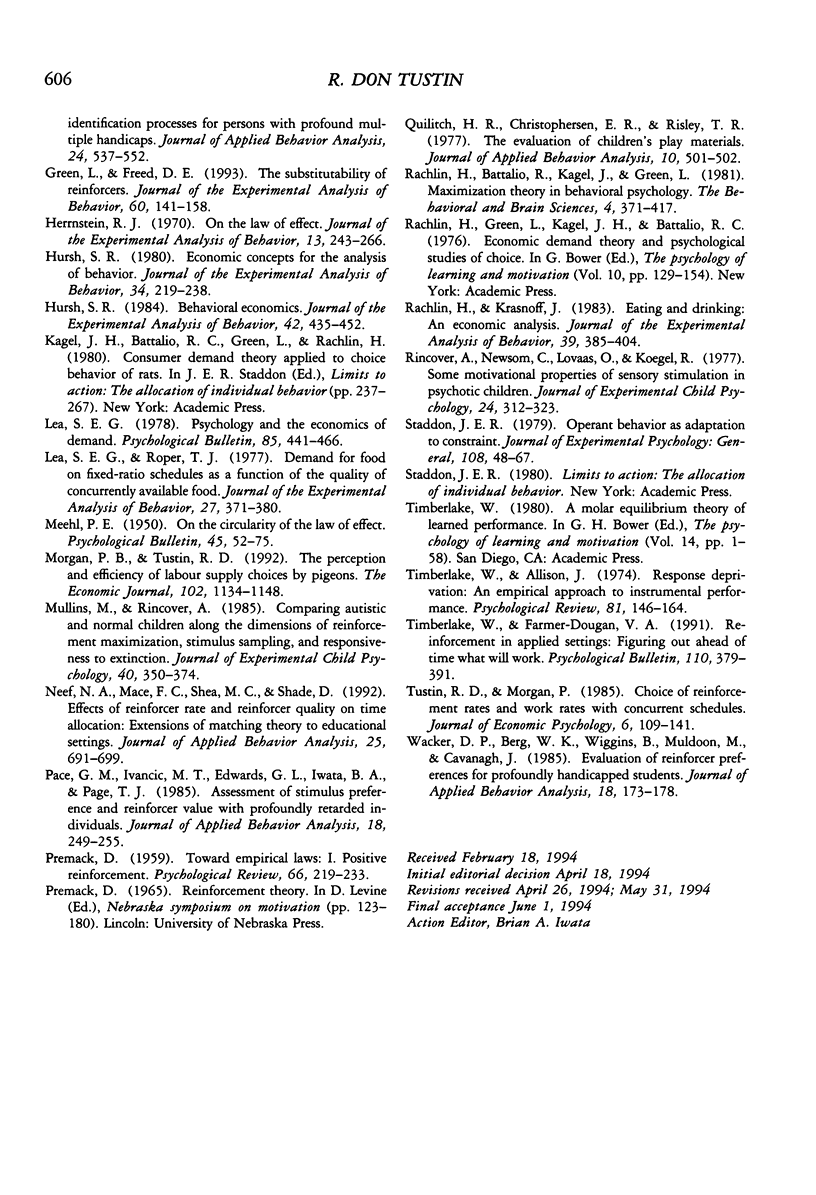
Selected References
These references are in PubMed. This may not be the complete list of references from this article.
- Allison James. Response deprivation, reinforcement, and economics. J Exp Anal Behav. 1993 Jul;60(1):129–140. doi: 10.1901/jeab.1993.60-129. [DOI] [PMC free article] [PubMed] [Google Scholar]
- Baum W. M. Performances on ratio and interval schedules of reinforcement: Data and theory. J Exp Anal Behav. 1993 Mar;59(2):245–264. doi: 10.1901/jeab.1993.59-245. [DOI] [PMC free article] [PubMed] [Google Scholar]
- Dattilo J. Computerized assessment of preference for severely handicapped individuals. J Appl Behav Anal. 1986 Winter;19(4):445–448. doi: 10.1901/jaba.1986.19-445. [DOI] [PMC free article] [PubMed] [Google Scholar]
- DeGrandpre R. J., Bickel W. K., Hughes J. R., Layng M. P., Badger G. Unit price as a useful metric in analyzing effects of reinforcer magnitude. J Exp Anal Behav. 1993 Nov;60(3):641–666. doi: 10.1901/jeab.1993.60-641. [DOI] [PMC free article] [PubMed] [Google Scholar]
- Ferrari M., Harris S. L. The limits and motivating potential of sensory stimuli as reinforcers for autistic children. J Appl Behav Anal. 1981 Fall;14(3):339–343. doi: 10.1901/jaba.1981.14-339. [DOI] [PMC free article] [PubMed] [Google Scholar]
- Fisher W., Piazza C. C., Bowman L. G., Hagopian L. P., Owens J. C., Slevin I. A comparison of two approaches for identifying reinforcers for persons with severe and profound disabilities. J Appl Behav Anal. 1992 Summer;25(2):491–498. doi: 10.1901/jaba.1992.25-491. [DOI] [PMC free article] [PubMed] [Google Scholar]
- Green C. W., Reid D. H., Canipe V. S., Gardner S. M. A comprehensive evaluation of reinforcer identification processes for persons with profound multiple handicaps. J Appl Behav Anal. 1991 Fall;24(3):537–552. doi: 10.1901/jaba.1991.24-537. [DOI] [PMC free article] [PubMed] [Google Scholar]
- Green Leonard, Freed Debra E. The substitutability of reinforcers. J Exp Anal Behav. 1993 Jul;60(1):141–158. doi: 10.1901/jeab.1993.60-141. [DOI] [PMC free article] [PubMed] [Google Scholar]
- Herrnstein R. J. On the law of effect. J Exp Anal Behav. 1970 Mar;13(2):243–266. doi: 10.1901/jeab.1970.13-243. [DOI] [PMC free article] [PubMed] [Google Scholar]
- Hursh S. R. Behavioral economics. J Exp Anal Behav. 1984 Nov;42(3):435–452. doi: 10.1901/jeab.1984.42-435. [DOI] [PMC free article] [PubMed] [Google Scholar]
- Hursh S. R. Economic concepts for the analysis of behavior. J Exp Anal Behav. 1980 Sep;34(2):219–238. doi: 10.1901/jeab.1980.34-219. [DOI] [PMC free article] [PubMed] [Google Scholar]
- Lea S. E., Roper T. J. Demand for food on fixed-ratio schedules as a function of the quality of concurrently available reinforcement. J Exp Anal Behav. 1977 Mar;27(2):371–380. doi: 10.1901/jeab.1977.27-371. [DOI] [PMC free article] [PubMed] [Google Scholar]
- Mullins M., Rincover A. Comparing autistic and normal children along the dimensions of reinforcement maximization, stimulus sampling, and responsiveness to extinction. J Exp Child Psychol. 1985 Oct;40(2):350–374. doi: 10.1016/0022-0965(85)90095-5. [DOI] [PubMed] [Google Scholar]
- Neef N. A. Effects of reinforcer rate and reinforcer quality on time allocation: Extensions of matching theory to educational settings. J Appl Behav Anal. 1992 Fall;25(3):691–699. doi: 10.1901/jaba.1992.25-691. [DOI] [PMC free article] [PubMed] [Google Scholar]
- doi: 10.1901/jaba.1977.10-501. [DOI] [PMC free article] [Google Scholar]
- PREMACK D. Toward empirical behavior laws. I. positive reinforcement. Psychol Rev. 1959 Jul;66(4):219–233. doi: 10.1037/h0040891. [DOI] [PubMed] [Google Scholar]
- Pace G. M., Ivancic M. T., Edwards G. L., Iwata B. A., Page T. J. Assessment of stimulus preference and reinforcer value with profoundly retarded individuals. J Appl Behav Anal. 1985 Fall;18(3):249–255. doi: 10.1901/jaba.1985.18-249. [DOI] [PMC free article] [PubMed] [Google Scholar]
- Rachlin H., Krasnoff J. Eating and drinking: An economic analysis. J Exp Anal Behav. 1983 May;39(3):385–404. doi: 10.1901/jeab.1983.39-385. [DOI] [PMC free article] [PubMed] [Google Scholar]
- Rincover A., Newsom C. D., Lovaas O. I., Koegel R. L. Some motivational properties of sensory stimulation in psychotic children. J Exp Child Psychol. 1977 Oct;24(2):312–323. doi: 10.1016/0022-0965(77)90009-1. [DOI] [PubMed] [Google Scholar]
- Timberlake W., Farmer-Dougan V. A. Reinforcement in applied settings: figuring out ahead of time what will work. Psychol Bull. 1991 Nov;110(3):379–391. doi: 10.1037/0033-2909.110.3.379. [DOI] [PubMed] [Google Scholar]
- Wacker D. P., Berg W. K., Wiggins B., Muldoon M., Cavanaugh J. Evaluation of reinforcer preferences for profoundly handicapped students. J Appl Behav Anal. 1985 Summer;18(2):173–178. doi: 10.1901/jaba.1985.18-173. [DOI] [PMC free article] [PubMed] [Google Scholar]


